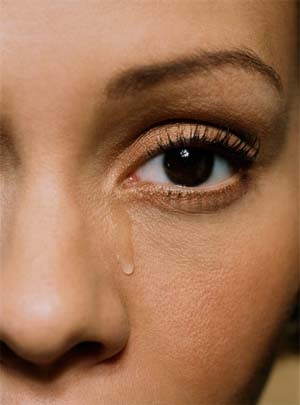Apr 25, 2024
Apr 25, 2024
 Campbell has rightly observed “Beauty’s tears are lovelier than her smiles”. Crying is a universal human experience and most of us have cried some time or the other in our lives. We human beings are probably the only animals who cry at the time of our birth. Later too as we travel through the complexities of life, we may give vent to a variety of emotions through our tears.
Campbell has rightly observed “Beauty’s tears are lovelier than her smiles”. Crying is a universal human experience and most of us have cried some time or the other in our lives. We human beings are probably the only animals who cry at the time of our birth. Later too as we travel through the complexities of life, we may give vent to a variety of emotions through our tears.
It is aptly observed, “All the rarest hues of human life take radiance and are rainbowed out in tears”. We may weep, wail, whine, whisper, snivel, squall, howl, blubber; we may also burst into tears, break down and cry, have a fit of crying, dissolve into tears, shed tears, become teary eyed or just be on the verge of tears. Whatever we call it, and however we describe it, those salty droplets on our cheek can be a symptom of many underlying feelings, according to medical experts.
Reasons
Crying may be induced by a variety of emotions, ranging from anger, frustration or sadness; because you had a fight with your best friend, or you cant find an important document or your pet dog has died. But we also cry for the sheer joy of it – because we topped the exam, got a promotion or have fallen in love. Athletes and players are seen crying on winning a trophy or an important match; as do persons getting a decisive victory in an election. It is said “tears are the safety valves of the heart when too much pressure is laid on it”.
Crying is s direct call for help (e.g. for a child). It is an established mode of communication to express more than words.
Mechanism
How do tears flow? Any of the suggestions mentioned above makes our central nervous system carry these sensory stimuli to our brain. This results in a physiological response that activates our tear ducts. The lump in our throat that usually precedes every crying bout is caused by a contraction of the muscles of our larynx. Our sobs are actually caused by involuntary spasms of our diaphragm. In addition, the act of crying gives our respiratory, muscular, digestive, nervous and circulatory system a real work out.
Recent Findings
Recent research has revealed the following aspects about tears:
Good for Health
Many psychiatrists and psychotherapists believe that crying is beneficial for our health. It discharges all the tension and gives vent to the accumulated feelings associated with whatever problem is causing the bout of tears. It relieves the brain and heart of anxiety and restores mental balance.
Crying is a natural tranquilizer. It lowers blood pressure that has shot up with emotional agitation. Psychologists believe that a person who has had a good cry is able to bounce back and cope more rationally. In fact tears are said to prevent sorrow from becoming despair and madness.
Individual Traits
According to psychologists crying is a warning signal that something is bothering you. So once you are composed you should examine your feelings and try to go to the root of the problem and solve it. Chances are that if you cant figure out why you are crying, the problem will only return to haunt you. Thus, evaluating the reasons for your tears is important.
Some people like to sob alone while others prefer crying on the shoulder of a spouse/family member/friend. A comforting hand and a sympathetic ear is always a good tonic, specially when one is feeling down in the dumps. According to doctors our crying habits are as much a part of us as the color of our eyes or hair. These are individual personality traits and vary from person to person. It also depends on how you learned to react to tears - your social conditioning to tears.
Research
William Frey, Director of Psychiatry Research Laboratories of St Paul-Ramsey Medical Centre, Minnesota, USA was probably the first person to do serious research on human tears. Frey found that tears are the product of an excretory process like urinating and sweating. He also believed that emotional distress produced toxic substances in our body and that crying helped to remove them from our system.
Gender Bias
Studies have revealed that the leading cause for crying in women involved interpersonal relationships, often separation from a loved one. While women normally burst into tears as one of their responses to anger, men don’t.
Conclusion
History is replete with instances of people breaking down and shedding tears, from Eve to Alexander to Ashoka. Indeed if we can learn to let the tears flow we may be able to throw away some of our medicines. As Charles Dickens had Mr Bumble say in ‘Oliver Twist” – “Crying opens the lungs, washes the countenance, exercises the eyes and softens down the temper. So cry away”.
Image (c)Gettyimages.com
17-Aug-2019
More by : Dr. Anjana Maitra